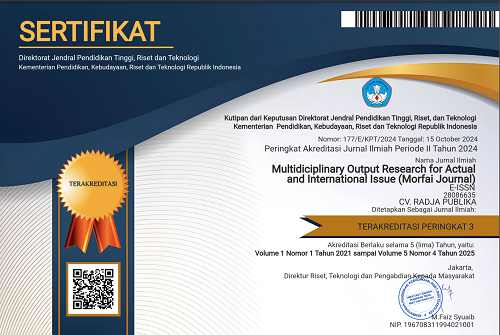INCREASING THE ADDED VALUE OF BROILERS IN LHOKSEUMAWE CITY BY DEVELOPING SUPPLY CHAIN AND FOOD BALANCE MODELS
Main Article Content
Umaruddin Usman
Likdanawati
Cut Putri Mellita Sari
Ichsan
The purpose of this study was to determine the supply chain's path or flow pattern from the production source area to the consumer, as well as the parties involved, design a supply chain model, and build a food balance to determine whether there was a surplus or deficit of broiler meat in Lhokseumawe City. Furthermore, utilizing the Hayami technique, this study assesses the added value and profit for traders selling chicken meat. Documents, questionnaires, and interviews with retailers were used to collect data. The findings revealed that retailers controlled or monopolized the supply chain of broiler meat distribution, while producers were accomplices of several large corporations that controlled or monopolized the commodity of broiled chicken in Aceh Province. North Aceh Regency, Pidie Jaya Regency, and Pidie Regency are all sources of commodities coming from outside of Lhokseumawe City. To solve the problem of broiler meat supply, all competent parties, including the government, the commercial sector, relevant agencies/institutions, researchers, academics, scientists, and specialists, must work together to build a design model for the purebred broiler meat supply chain. Most actors cooperate and support one another to gain additional value and profit. Meanwhile, to make up for the losses, a few dealers sell other poultry products including free-range chicken and duck, as well as collect waste from the birds.
Dewi Hastuti, Rossi Prabowo, Ahmad Anwar Syihabudin, (2018), Hen Day Production (HDP) and Break Even Point (BEP) Levels of Laying Chicken Business (Gallus sp), Journal of Agrifo, University of Malikussaleh, Vol. 3, No. 2.
Bank Indonesia, (2020), https://www.bi.go.id/id/publikasi/laporan-tahunan/perekonomian/
Ratna Purwaningasih , Muhammad Arief , Daru Rahmawati, (2016), Supply Chain Analysis and Broiler Distribution, National Seminar on Industrial Engineering, Gadjah Mada University.
Lambert, D.; Cooper, M. (2000). “Issues in Supply Chain Management,” Industrial Marketing Management, Vol. 29 (1), 65 – 83.
Munawir, H., Ciptaningtyas, A., Djunaidi, M., & Setiawan, E. (2018). Analysis of the added value of processed purple cassava products and purple cassava supply chain. Scientific Journal of Industrial Engineering, 17(2), 151-157.
Rizqiah, F., & Slamet, A. S. (2014). Value added analysis and determination of metrics for measuring supply chain performance of calina papaya (case study at PT Sewu Segar Nusantara). Journal of Management and Organization, 5(1), 71-89.
Aji, Emhar, Dan Agustina, (2014), Analysis of the Beef Supply Chain in Jember Regency. Agricultural Scientific Periodic, [S.L.], V. 1, N. 3, P. 53-61, Feb. 2014. Issn 2338-8331.
Assauri, S. 2011. Basic Marketing Management, Concepts and Strategies. Grafindo Persada, Jakarta.
Pangestuti, M. D., Mukson, M., & Setiadi, A. (2019). Marketing Supply Chain Analysis and Added Value of Grain in Undaan District, Kudus Regency. Jurnal Ekonomi Pertanian dan Agribisnis, 3(4), 671-680.
Kementan, (2019), Guidelines for preparing a food balance sheet, Center for Food Availability and Insecurity, Food Security Agency
Sari, R. Y., Hasyim, A. I., & Widjaya, S. (2019). Supply chain and added value of jackfruit chips in Natural Panda Chips Agroindustry in Gedong Tataan District, Pesawaran Regency. Journal of Agribusiness Science, 6(3), 257-262.









